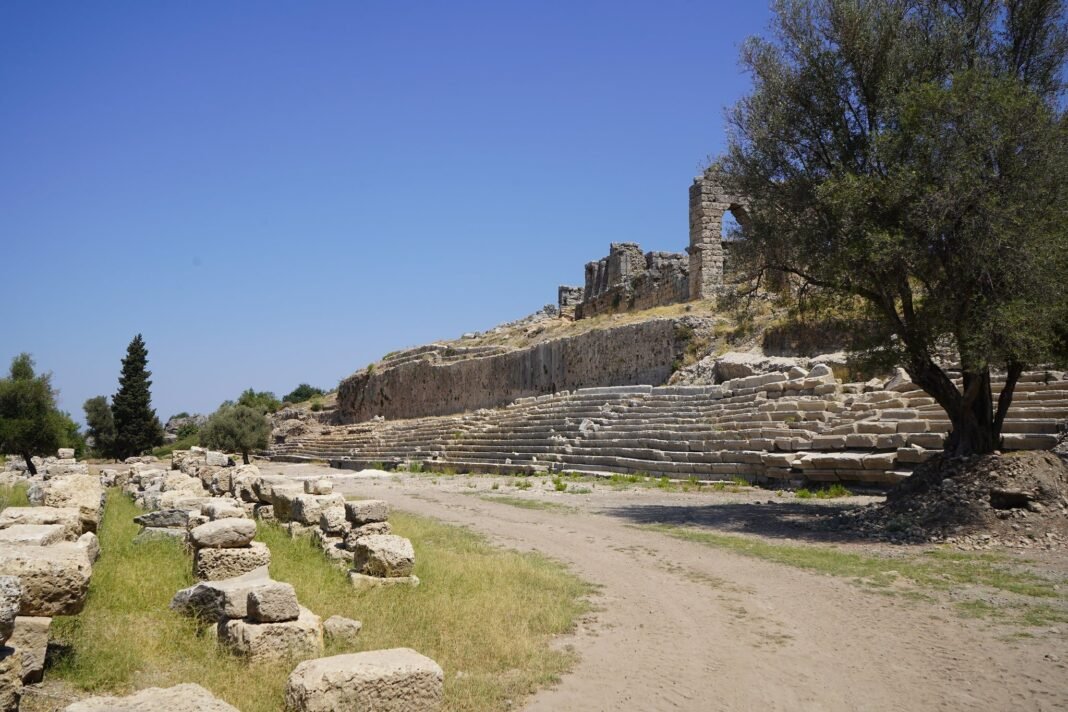
Archaeologists have unearthed Roman-era tombs during excavations at the ancient Greco-Roman city of Sillyon (Greek: Σύλλιον) in Turkey’s Antalya province, Serik district. The discovery provides rare evidence of burial customs in the region and deepens understanding of the site’s long and layered past.
A fortress through the ages
Sillyon was founded at the start of the 2nd millennium BC. Built on a high hill, the city served as a natural fortress and a strategic hub in Pamphylia, a region deeply tied to the Greek world. Ancient sources described Sillyon as a thriving Greek settlement before it later came under Roman control.
Over time, Sillyon also became part of Byzantine, Seljuk, and Ottoman empires. Excavations at the site are carried out year-round under the “Heritage for the Future Project,” supported by Turkey’s Ministry of Culture and Tourism and sponsored by Opet.
Antalya’nın Serik ilçesindeki Sillyon Antik Kenti’nde devam eden kazı çalışmalarında, Roma dönemine ait 4 mezar bulundu
▪️ Antik kent, Roma, Bizans, Selçuklu ve Osmanlı dönemlerine ait yapıları bir arada barındırıyor
▪️ Kazılarda 3 bireye ait, 3 farklı döneme tarihlenen gömü… pic.twitter.com/apKkL0U0hE— Anadolu Ajansı (@anadoluajansi) August 19, 2025
A remarkable 2025 find
During the 2025 excavation season, archaeologists uncovered four Roman tombs. Among them, one stood out: a square-planned chamber tomb featuring unique architectural details and ritual elements.
Inside the structure, experts identified three separate burials from different periods. The reuse of the same chamber over time, combined with the artifacts recovered, points to a distinctive funerary tradition not previously documented in the region.
Rich grave goods
The chamber contained an array of objects, including rings, earrings, a hairpin, coins, terracotta vessels, glassware, figurines, and metal ornaments. These funerary offerings helped date the tomb to the late 2nd century AD.
Researchers concluded that the individuals buried here belonged to Sillyon’s aristocracy. The richness and variety of the artifacts suggest they were prominent members of the city’s elite.
Expert insight
Dr. Murat Taşkıran, excavation director and faculty member at Pamukkale University, said the tomb offers a new perspective on local burial practices.
He explained that the chamber was located at the center of a square-planned structure and reused across different periods. This reflects a ritual tradition unique to Sillyon, he explained, noting that the discovery broadens knowledge of burial customs across the wider region.
Later Islamic use
Centuries after the Roman period, the same necropolis was reused as a Muslim Turkish cemetery between the 13th and 15th centuries. Excavations revealed that soldiers and their families were buried there, with elements of Central Asian Turkic traditions visible in the grave architecture.
Dr. Taşkıran said such findings are rare in this part of Anatolia. He described the Islamic-era graves as important evidence of cultural transformation after the Turks established rule in the region.
Preserving a crossroads of civilizations
Archaeologists have stabilized the tomb through conservation and restoration, ensuring it can be studied by future generations. Each discovery adds to Sillyon’s reputation as a crossroads of civilizations and one of Antalya’s most valuable archaeological sites.
The Roman chamber tomb enriches Sillyon’s story, which stretches back to its early role as a Greek settlement in Pamphylia and later as a Byzantine stronghold. From Hellenic origins to Roman customs and Turkish-Islamic traditions, the site embodies the layered history of Anatolia.
As excavations continue, Sillyon keeps unveiling its secrets, reinforcing its place as one of Turkey’s most significant archaeological treasures.


